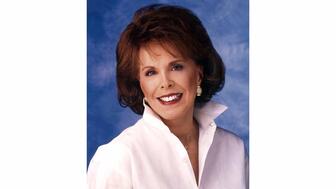The special-edition egg pendant ingested in a New Zealand jewelry store was recovered after a six-day wait.
The PR Adviser: Dear Lilian
In a column exclusive to National Jeweler, public relations professional Lilian Raji addresses jewelers’ questions about public relations and marketing. This week: How do multi-branded retailers deploy co-op materials without diluting their store’s brand?

In a column exclusive to National Jeweler, public relations professional Lilian Raji addresses jewelers’ questions about public relations and marketing.
This week, she answered an inquiry from a retailer in Colorado, who wishes to remain anonymous, on how to use third-party co-op materials without diluting one’s own brand.
Have a public relations or marketing question you would like to get answered? Email it to Lilian at nationaljeweler@lmrpr.com.
------
Dear Lilian,
How should multi-branded retailers incorporate and deploy third party co-op materials, which may not be altered other than placement of the jeweler’s logo, without diluting the retailer’s own brand?
Co-op Curious in Colorado
Dear Co-op Curious,
Let’s start by clarifying one thing: The only way you can dilute your brand is by offering poor customer service.
If your sales people aren’t taught that it doesn’t matter what a person wears when they enter your store, and potential customers are treated with varying levels of respect based on their attire, your brand is already more watered down than Anita Ekberg in the Fontana di Trevi.
How salespeople treat customers when they walk through the front door is a subject very near and dear to me --it’s the secret to my success as one of the top earners at Tourneau Atlanta many years ago.
The man wearing sweatpants, ignored by everyone in the store but me, bought a rose gold Breitling Bentley from me at full price. And the customer who called looking for an $895 Movado would later allow me to curate his entire watch collection. After a year of giving him personal service, he had a very respectable collection of fine timepieces valued at over $400,000.
So I start my response to you, dear Curious, with reinforcing the need to ensure everyone on your staff treats every single person that walks through your doors like royalty. It’s how people are treated that determines the story told about your store. Those stories are what builds brands--not what products you carry.
If your closest competitor carries some of the same brands you do, how does a customer decide where she shops? The answer to this is usually defined by what that customer learns about your store before walking through your front door.
Now, bear with me as I answer your question by reminiscing on how I contributed 12 percent of Tourneau Atlanta’s 2004 sales. (Because, ultimately,
I became successful at Tourneau by positioning myself to my customers as a trusted advisor. I made it my business to know everything about every brand we carried. Thus when I made recommendations to customers, they knew I did so with an understanding of how a particular brand fit their personal aesthetic.
Whenever manufacturers sent us catalogs and other materials, I quickly hoarded them from my other sales associates to make sure I had enough for my own customers.
Now, before you tsk tsk me, take note that we all did this. It’s just part of the job when working in an all-commission environment. Those materials became the equivalent of having a carton of cigarettes in prison--when you need a favor from another salesperson, a catalog was your bartering tool.
Moving on …
When the catalogs came in, I’d go through my trusty notebook and see which of my customers has asked for a particular type, style or brand of watch. If the current catalog fit what a customer was looking for, I’d staple my business card, which displayed the Tourneau logo, onto the cover. I slipped my Tourneau-logo-ed business card as bookmark into the pages showing my recommendations and wrote a quick note on Tourneau stationary explaining why I was suggesting these watches. The note and catalog would be placed in a folder with a Tourneau logo and mailed in a large envelope, which also displayed a Tourneau logo.
Pop quiz: What company was I working for at the time?
If you said Tourneau, by George, you’re paying attention!
When my customers received the package, they didn’t wonder if they should call Mayors or Ben Bridge to get more information about my recommended watches. They called Tourneau and, more specifically, they called me. And although I left Tourneau at the end of December 2004, those same customers continued to call Tourneau for watches because I passed my trusty notebook on to a salesperson I knew would take good care of them.
Which brings us back to my earlier point: properly train your sales team and nothing will dilute your brand.
I’m going to assume your follow-up question is, what do I do when I have a mailing list of potential customers who have yet to experience the A-1 service of my sales team?
Second pop quiz: Why did you answer Tourneau in the last pop quiz?
Here’s a hint: How many items with the Tourneau logo did I include in my package to customers? And don’t forget--I didn’t stamp the catalogs with a Tourneau logo. I stapled my business card to them.
For the customer receiving my package, the first thing he sees is the Tourneau logo. When he’s perusing through the catalog, he’s going first to the pages I bookmarked with my Tourneau logo-ed business card.
He may be looking through an IWC catalog, but he’s doing so subconsciously thinking Tourneau. And, thanks to my business card, he’s thinking of me, the trusted advisor that works at Tourneau, as the person who sent him the catalog.
Never allow materials to leave your store without a business card attached. Encourage your sales team to staple a card to the front cover of every catalog. The more ambitious types like myself should also drop one or two extra cards in between catalog pages.
I know this can seem like extra work, but trust me when I say potential customers are more likely to pick up the phone and call when they have a person to speak to rather than randomly calling a store to get information. Personal service is the hallmark for any successful sales transaction. That personal service should start with your very first contact with a customer.
Now, when it comes to co-op advertising vs. collateral materials, there’s really not much alteration you can do in designing the advertising campaign beyond what the vendor is willing to pay. And as you mention, that’s often only including your store logo.
But you should understand: a logo (or an ad for that matter) has no value unless someone is reinforcing what that logo means.
That someone is the salesperson who answers the phone after a potential customer sees the billboard or magazine ad with your logo; the salesperson whose business card (with your logo!) is attached to the materials a potential customer receives; and the salesperson who warmly greets that potential customer when he or she finally walks through your front door.
Stop worrying about not being able to tell your complete story with an ad paid for by a vendor.
Manufacturers only offer co-op dollars to sell more of their products--and whether that’s with you or with your competitor down the street is all the same to them. The manufacturers choose you, however, because you’ve proven to them that you’re the worthier investment.
What does it matter if a potential customer comes into your store looking for the Cartier watch or necklace she saw in a Cartier ad with your logo? Once she sets foot through your doors, she’ll see what else your store has to offer.
Advertising, including co-op, social media, public relations--all of these are just marketing tools intended to generate leads. It’s what your sales team does with those leads that keep you in business.
Lilian Raji is a strategic marketing and public relations adviser that helps luxury lifestyle brands sell more products to luxury buyers. Send questions for The PR Adviser to nationaljeweler@lmrpr.com or contact her at lilian@lmrpr.com. Follow her on Facebook, Twitter, Instagram and Pinterest.
The Latest

Associate Editor Natalie Francisco plays favorites with Piece of the Week, selecting a standout piece of jewelry from each month of 2025.

The “Love and Desire” campaign is inspired by the magic that follows when one’s heart leads the way, said the brand.

How Jewelers of America’s 20 Under 40 are leading to ensure a brighter future for the jewelry industry.

Two awardees will receive free tuition for an educational course at the Swiss lab, with flights and lodging included.


Berta de Pablos-Barbier will replace Alexander Lacik at the start of January, two months earlier than expected.

Sotheby’s held its first two jewelry sales at the Breuer building last week, and they totaled nearly $44 million.

Roseco’s 704-page catalog showcases new lab-grown diamonds, findings, tools & more—available in print or interactive digital editions.

Winners will receive free registration and lodging for its fourth annual event in Detroit.

Here are six ideas for making more engaging content for Instagram Reels and TikTok, courtesy of Duvall O’Steen and Jen Cullen Williams.
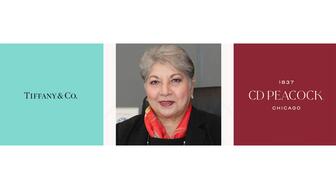
The honorees include a notable jewelry brand, an industry veteran, and an independent retailer.

Carlos Jose Hernandez and Joshua Zuazo were sentenced to life without the possibility of parole in the 2024 murder of Hussein “Sam” Murray.

Yood will serve alongside Eduard Stefanescu, the sustainability manager for C.Hafner, a precious metals refiner in Germany.
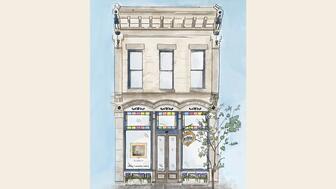
The New Orleans jeweler is also hosting pop-up jewelry boutiques in New York City and Dallas.

Set in a Tiffany & Co. necklace, it sold for $4.2 million, the highest price and price per carat paid for a Paraíba tourmaline at auction.

The jeweler’s “Deep Freeze” display showcases its iconic jewelry designs frozen in a vintage icebox.

Take luxury gifting to new heights this holiday season with the jeweler’s showstopping 12-carat sphene ring.

This year's theme is “Unveiling the Depths of the Ocean.”

In its annual report, Pinterest noted an increase in searches for brooches, heirloom jewelry, and ‘80s luxury.

Starting Jan. 1, customers can request the service for opal, peridot, and demantoid garnet.
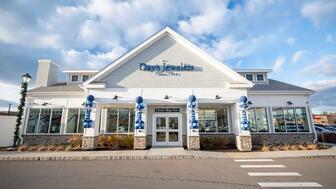
The 111-year-old retailer celebrated the opening of its new location in Salem, New Hampshire, which is its third store in the state.
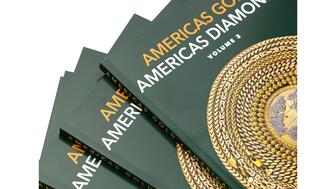
The new catalog features its most popular chains as well as new styles.
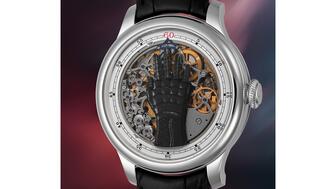
The filmmaker’s personal F.P. Journe “FFC” prototype was the star of Phillips’ recent record-setting watch auction in New York.

The new location in the Design District pays homage to Miami’s Art Deco heritage and its connection to the ocean.

Inflations, tariffs, and politics—including the government shutdown—were among consumers’ top concerns last month.
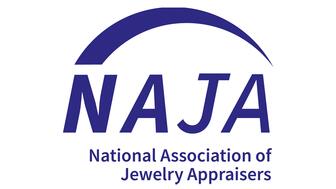
“Longtime favorite” presenters, as well as first-time speakers, will lead talks and workshops at the annual event in Tucson next year.

Silas Smith of Meridian Metalworks won the challenge with his pendant that blends Australian and American landscapes.

